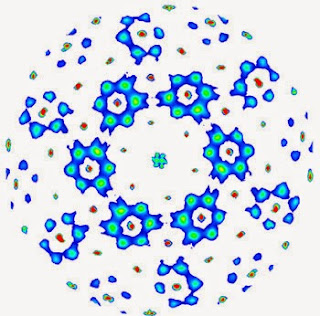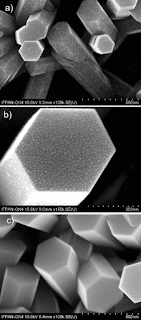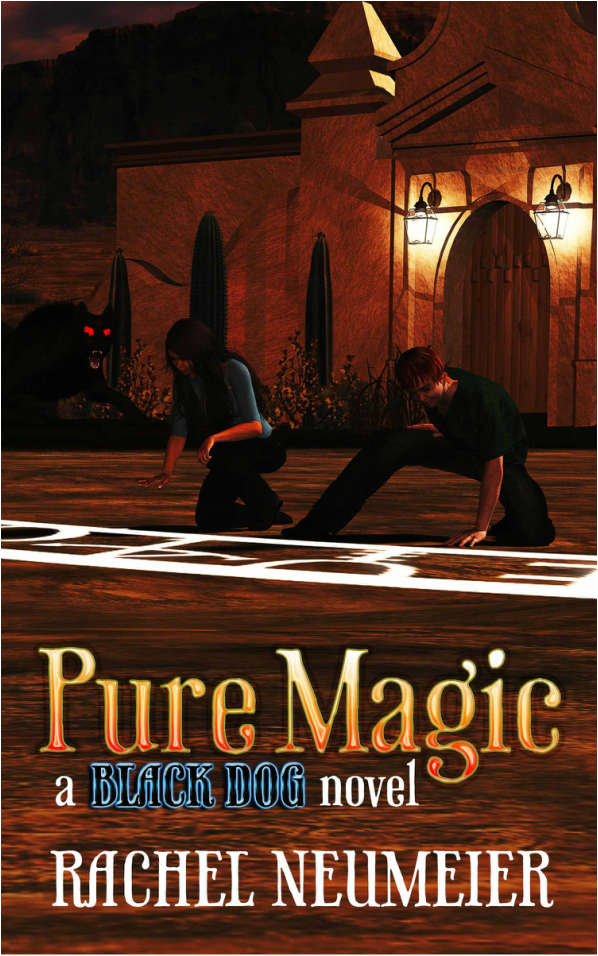All Posts (6509)
Strange as it seems I was listening to a metaphysical film on quantum, light and spirituality. Then I was presented with the opportunity to learn to use a real camera. I've been using my tablet cam but seriously, it's not a serious camera. In the back of my mind a world opened about capturing a moment of light.
You know it's rude to take someone's photo without permission? Think about that statement, "Take someone's photo." Do the photons of light captured by the camera belong to the person who's light was captured. Many primitive peoples are camera shy, they have stories of the machine that steals souls (so I've heard).
A story popped up about a fashion model who couldn't piece her galactic history together because of the holes, blank zones created by photographs she didn't possess. Or the psychic detective who left his photo in the places he wanted to snoop around. He had a terrible time retrieving them, was almost a suspect. And the world traveller who never left his house yet been everywhere in the pictures of his 20 year collection of National Geographic Magazines.
We see a blast in the distant galaxy and realize it happened thousands of years ago, the light of that event finally reaching us. Shutters so fast it captures slice after slice of time over a time span. Light strikes the face one way, the reflection hits your eye, tells a story. A different light strikes the same face and conveys a different story. People have their best side, want to be seen in a good light and hate being left in the dark. People live in shadows, view life with rose colored glasses and are blind to a great many things.
The good thing is that you can't clone yourself with many prints because each photon pattern that resembles you does not have the intelligent cluster of photons that is your consciousness. It a universal mantra "don't copy that floppy!". But perhaps there are parallel realities and you exist exponentially like a Russian puzzle doll, always one with itself, but clueless of the others. I leave the light on.......take a picture, it lasts longer.
 |
| Image Source: CBC Radio link below |
Topics: Commentary, Climate Change, Democracy, History, Politics, Science, STEM
"History repeats itself, and that's one of the things that's wrong with history."
Clarence Darrow
The post title is very stark, but not a subject I haven't commented on before. My concern is, this one as far as existential humanity, may be our last.
It's hard not to look at Al Qaeda, ISIS/ISIL, The Tea Party, Right-Wing Evangelicals, Quiverfull, The Westboro Baptist Church and not see similarities: they are all primarily authoritarian, and afraid. Like celebrity chimps they are loud, demonstrative, craving and gaining attention; disrespectful of diversity and boundaries and in some extreme cases deadly. They are afraid of the changes in society and a sense of lost control. This is evidenced on social media and our forms of entertainment. Some high profile recent falls from grace - The Duggars as a part of Quiverfull, a recent example - have logged disappointing performances regarding religious orders in the public sphere in the eyes of more skeptical youth, that are fleeing the pews. The fearful thus gravitate to those who seem to have "the answers": simple, comforting and confirming their own hard-ingrained beliefs.
Fear: evidence may or may not agree with ancient texts, followers of which are operating in the realm of faith as well as culture. It can be a positive characteristic that unifies. There is nothing inherently wrong with that.
There is something inherently wrong when the louder primates force their cognitive dissonance on everyone else. Texas pushed through books last year that identify Moses as a Founding Father in defiance of sense and actual history. The problem being other states are now making their textbook purchases essentially based on land mass. CREATIONISM IS NOT SCIENCE, and I will continue saying that not because it's my opinion: it is simply fact. This lunacy is destructive and self-defeating to our survival as a nation. It's a matter of knowing what is real and reality and what is not; what to be concerned about to make rational decisions or not. We cannot make decisions on climate change, alternative energy solutions, infrastructure renewal because it goes against a dogma - a conservative-free market-libertarian ideology. Fun fact: Ayn Rand did not like libertarians. Demonstrably, or should I say not so: not a single circuit design; not a single Nobel laureate; not a single invention or industry innovation that has impacted the lives of millions or billions of people has come out of this faux sacred naval-gazing! I think it would be rude for anyone to interrupt a Imam, Priest or Rabbi to "correct the science" in a sermon based on ancient texts, but no such courtesy is reciprocated to the scientific community. It is the height of incongruity to fear and loathe science and technology, while relying on it for commerce, entertainment and diatribes. It is highly unrealistic to believe a nation at the forefront of technological advances can stay there forever on this path into willed ignorance. Knowledge is democratizing and ubiquitous, and science will be performed here, or somewhere else. The flow of currency and GDP will be clear evidence of this folly. It was the reason for the decline of Rome: we are its modern doppelganger.
"History repeats itself, first as tragedy, second as farce."
Karl Marx
"If history repeats itself, and the unexpected always happens, how incapable must Man be of learning from experience."
George Bernard Shaw
An enlightened citizenry is indispensable for the proper functioning of a republic. Self-government is not possible unless the citizens are educated sufficiently to enable them to exercise oversight. It is therefore imperative that the nation see to it that a suitable education be provided for all its citizens. It should be noted, that when Jefferson speaks of "science," he is often referring to knowledge or learning in general.
CBC Radio: Science Under Siege, Paul Kennedy
From the makers of slavery, its the Triple Crown. But seriously, you're telling me the crowd doesn't contain high concentrations of people descended from slave owners.
 |
| Ariana Miyamoto - Miss Japan 2015, image source @ link below |
Topics: Beauty, Commentary, Civil Rights, Human Dignity, Human Rights
The American enterprise has been emulated since "Exceptionalism" became a neologism in our lexicon. We may have also exported some of our evils.
Perhaps the indigenous population of the Japanese nation don't quite realize they are an amalgamation of several migrating tribes of humanity: Chinese, Korean, Southeast Asian (see link). I'm speculating, I really don't know. Masutatsu Oyama - the founder of Kyokushin Karate - was born Choi Young-Eui in Gimje, South Korea during the Japanese occupation. Wikipedia One of his books - Mastering Karate - traced martial arts to the African continent. We are ALL from the African continent, all aspects and hues of humanity started there as the tropics near the equator was the best incubator for "man-thinking": homo sapiens; tools and opposable thumbs; weapons for defense and offense Going from tree dwellers to hunter-gatherers, we settled in villages with agriculture. City-states emerged, fueled by architecture, writing and trade. Eventually, some of us migrated eastward and northward, probably driven by curiosity, deficit attention spans; greed and power. Over time, our outward appearance due to ultraviolet radiation and Melanin, changed with respect to our environments.
Over time, we thinking men created our own mythologies about our unique tribes. Our deities generally looked like us; our culture and jurisprudence fashioned on not getting struck by their wrath. Slowly, verifiable evidence measured higher than dogma as far as survival. The Scientific Method was born.
Perhaps there are no relatives of the Hiroshima and Nagasaki bombings, or at least nowadays in minimal numbers. Perhaps there is no cultural memory of the indignities paid to people like George Takei (Mr. Sulu of Star Trek), when his entire Japanese-American family was interned during World War II for the crime of being Japanese. Or maybe, that's the point here.
Mythologies are self-deluding, and become echo chambers and fill in gaps that actual histories could occupy. One begins to believe the "internal press" about one's culture; one's people...one's exceptionalism.
Ariana Miyamoto is exceptionally beautiful. The fact her parentage is Japanese and African American is irrelevant to that reality. "Hafu" is the Japanese neologism for half-Japanese, similar to light-skinned or Mulatto in the United States. As I said, we've inadvertently exported our sins and dirty laundry.
Beyond tribalism, we should become true cosmopolitans - residents of the Earth and by extension the universe - and part of the tribe called human.
The beauty contest winner making Japan look at itself
Rupert Wingfield-Hayes, BBC News, Tokyo
 |
| Image Source: Amazon.com |
Topics: Comic Books, Physics Humor, Physics and Pop Culture
Comic books are our modern mythology. We await with baited breath the donnybrook also known as Batman v Superman, though we don't yet know why the "Super Friends" start their inevitable bromance with a grudge match. Avengers: Age of Ultron answered who else was "worthy" enough - Vision - to lift Thor's hammer - forged in the heart of a dying star, which kind of suggests a Brown Dwarf or White Dwarf, meaning nothing in the universe worthy or not should be able to lift a teaspoon of Mjolnir (except apparently, a nail on the wall of Dr. Jane Foster's apartment in "Dark World" - seriously, look again). Technically, Vision came to life from it, so a one-armed curl shouldn't be past his AI abilities. Of course, there are others who lift "the smasher" - including the Hulk, who heretofore couldn't no matter how mad he got!
Currently in vogue on television are series like Agents of Shield (with the exception of enhanced humans and demigods, pretty terrestrial in its physics); Arrow (essentially, Batman with a bow); Gotham (that is so dark, it's a wonder Bruce Wayne or Jim Gordon WANT to stay there); and of course the breakout hit, the societal, self double entrendre: The Flash.
The series ended (spoiler alert) with a lot of cockeyed physics, like running at twice the speed of sound, colliding with a single proton in an accelerator and opening a wormhole so his nemesis - The Reverse Flash (a really pissed-off psychopath that comes back to create The Flash to KILL him - ahem: keep up), so he could go home. Home in this case, the 25th Century, bypassing Kirk and Picard's paltry epochs by two centuries where they apparently have time travel, but no cows for hamburgers, if Rev is to be "believed." The cliffhanger was Barry doing the heroes sacrifice of running into a black hole opening above Central City - that in real world physics would have killed most of the population with its radiation and ground the Earth into hamburger meat, Flash included. Ray Bradbury would be proud of the echo from his "A Sound of Thunder," an apocryphal foundation for time travel stories since its inception.
Of course, it's all hokey fun. Doing a serious and somewhat tongue-in-cheek search on the actual physics of superluminal (i.e. faster than light speed travel) resulted an interesting paper and related article [1, 3]; some humorous posts [2, 4], also tongue-in-cheek funny. Humor is always a good hook for STEM lectures and teenagers.
I enjoy the shows just like anyone else. For any story line to sell its audience, there is the usual suspension of belief in the verisimilitude of the fictional world and its "laws of cartoon physics." Alas, poor Yorick - our laws are binding. Even the Batman - my favorite, since he was for me the most believable - can't escape the laws we're subject to on a daily basis - like all of us mere mortals subject to Entropy, he wears out too. Life without magic is kind of a drag, but there's still much wonder in reality.
For any of these shows, I become that kid on 25th and Cleveland Avenue in Winston-Salem, NC that used to enjoy a nerdy Saturday with my best friend - trading and reading comic books, something sadly I don't think kids do much of anymore. I'm trying not to be the sour physics guy pointing out every impossibility in a movie or TV series - as I've gotten older, I'm better in large groups at keeping my mouth shut.

1. Physics arXiv: How superluminal motion can lead to backward time travel
Robert J. Nemiro and David M. Russelly
2. Geek: Quantum physics just solved one of the great paradoxes of time travel, Graham Templeton
3. Scientific American: Time Travel Simulation Resolves “Grandfather Paradox”, Lee Billings
4. PBS News Hour: Spider-Math and Bat-Physics: Science in a Superhero World, Rebecca Jacobson
 |
| Image Source: ESA Rosetta Blog |
Topics: Astronomy, Astrophysics, Comets, Rosetta, Spectrograph
A close-up of Comet 67P/Churyumov-Gerasimenko by NASA's ultraviolet instrument surprised scientists by revealing that electrons close to the comet's surface—not photons from the Sun as had been believed—cause the rapid breakup of water and carbon dioxide molecules spewing from the surface.
Since last August, the European Space Agency's Rosetta spacecraft has orbited within a hundred miles of the comet in this historic mission. The spectrograph onboard, named Alice, specializes in the far-ultraviolet wavelength band and was developed by Southwest Research Institute (SwRI). Alice examines light the comet is emitting to understand the chemistry of the comet's atmosphere, or coma. A spectrograph is a tool astronomers use to split light into its various colors. Scientists can identify the chemical composition of gases by examining their light spectrum. Alice is the first such far-ultraviolet spectrograph to operate at a comet.
 |
| NASA's Alice ultraviolet (UV) spectrograph, seen here during construction, is aboard the European Space Agency's Rosetta spacecraft. Credit: Southwest Research Institute |
"The discovery we're reporting is quite unexpected," said Alice instrument Principal Investigator Dr. Alan Stern, an associate vice president in SwRI's Space Science and Engineering Division. "It shows us the value of going to comets to observe them up close, since this discovery simply could not have been made from Earth or Earth's orbit with any existing or planned observatory. And, it is fundamentally transforming our knowledge of comets.
Phys.org: Alice instrument's ultraviolet close-up provides a surprising discovery about comet's atmosphere
I have been here at BSFS for about 2 maybe 3 months. I should have written something and posted here a while ago. I have been handling this writing path so badly I am not always sure what to do next. So with that in mind. I am re-posting a piece I did about the relaunch of jchristinahenry.com. Last year I came to terms with what I could do and what I couldn't. I was tired of my writing being marginalized by everyone, myself included. I decided to give it the priority I believed it should have had all the time. Hence the remaking of the Flagship.
J. Christina Henry (JC) became a writer, when she was 12 years old. JC had various reasons the two most important now are:
1. She always told herself stories. They were her bedtime stories. Original stories or additions to her established favorites, JC later learned that it was called fan fiction.
2. The year before in 6th grade she committed plagiary. She felt very guilty about it but could not admit it until she was older. She needs to redeem herself and create an original story.
Fueled with the stories of the Sweet Valley High series, anything produced by Harlequin and Silhouette romance, Greek mythology and fairy tales. JC knew she could write a story with the same feel of her idols. JC began to struggle with a Cinderella type story and character development. It was an arduous process. Since JC knew nothing about writing.
JC told everyone she knew that writing was her calling. She had dream of becoming an acclaimed author and a movie deal. It didn't seem impossible for a young girl from Brownsville, Brooklyn. Then a relative read her work out loud without permission. JC was devastated. She wasn't ready and the story wasn't either. The story was really bad, not worth printing. It was the worst moment in her life. JC couldn’t fix the story and the desire to continue writing had died. She believed she was done with it and considered a career in teaching or librarian science. Although it was seriously wounded the inclination to be a storyteller was strong. It was seriously wounded but came back. JC found a new possible story. She delved into epic fantasy, leaving the genre which would be called later young adult romance alone.
In the 1990”s JC was in high school. It seemed to her that there was type of black writer’s spring. Many new African -American writers debuted. JC was exposed to Terry McMillan, Bebe Moore Campbell, Sandra Kitt, Rochelle Alers, Brenda Jackson and Valerie Wilson. JC read stories in every genre and believed that she had an original idea in each. But she wasn't consistent. Then she found Octavia E. Butler and later in the decade Nalo Hopkinson. These writers inspired her to write paranormal/speculative fiction.
JC has worked in this genre for many years. That bad reading experience made her wary of showing her work. For many years she worked without critical feedback to guide her work. As a result, she most likely got lost on decent underdeveloped ideas and couldn't get back on track with them and lost interest. She had a day job to support herself and small family. She told herself that she didn't need critical acclaim, notoriety or a movie deal. She doesn't need to be a literary great or a newly recognized one. JC writes now for the pleasure of the word. The understanding that although her stories may sometimes seem similar to others ( Another fear that stunted her work), her stories are her own because no one can tell them like she can. With this epiphany, JC began sharing pages of her work with a writer’s group in Atlanta. JC and family lived there for a few years before moving back to NYC. The first writers group was a great experience. It took her longer than expected but JC found a group in NYC. She attended faithfully for a summer and learned helpful tip for her work. She also read her work out loud for the first time. It was frightening but positive. She didn’t wow her audience with her brilliant story; they let her finally notice problem areas.
Some might wonder what is the point of all this. This blog was renamed the Flagship. It has been active for almost 4 years or more. JC cannot recall posting her work on this blog. She has whined about not being read (no real comments), not being skinny, not being employed. She may have complained about being single, having writer's blog or reader’s block etc. She will also attempt to be less self -deprecating and more optimistic. She may have attempted to write reviews on the things she likes books, movies, anime etc. But not her stories. So coming soon (mostly at the end of February), JC will post some of her fiction on this site. She hopes it will interest, entertain and attract readers. She has no illusion that it will catch a book deal but if that should happen she will not throw it away.
The grande dame of fantasy Ursula K Le Guin has weighed in forcefully to the debate about Amazon’s role in publishing. In a blogpost on the site Book View Cafe, entitled “Up the Amazon with the BS Machine, or Why I Keep Asking You Not to Buy Books from Amazon”, the American author has spoken out against what she describes as the company’s increasing influence not only on the bookselling market but also on which books get published, promoted and read. Her fierce conclusion is: “Every book purchase made from Amazon is a vote for a culture without content and without contentment.”
 |
| Skip Sterling for Quanta Magazine |
Topics: Higgs Boson, Higgs Field, Large Hadron Collider, LHC, Particle Physics, Theoretical Physics
Three physicists who have been collaborating in the San Francisco Bay Area over the past year have devised a new solution to a mystery that has beleaguered their field for more than 30 years. This profound puzzle, which has driven experiments at increasingly powerful particle colliders and given rise to the controversial multiverse hypothesis, amounts to something a bright fourth-grader might ask: How can a magnet lift a paperclip against the gravitational pull of the entire planet?
Despite its sway over the motion of stars and galaxies, the force of gravity is hundreds of millions of trillions of trillions of times weaker than magnetism and the other microscopic forces of nature. This disparity shows up in physics equations as a similarly absurd difference between the mass of the Higgs boson, a particle discovered in 2012 that controls the masses and forces associated with the other known particles, and the expected mass range of as-yet-undiscovered gravitational states of matter.
In the absence of evidence from Europe’s Large Hadron Collider (LHC) supporting any of the theories previously proposed to explain this preposterous mass hierarchy — including the seductively elegant “supersymmetry” — many physicists have come to doubt the very logic of nature’s laws. Increasingly, they worry that our universe might just be a random, rather bizarre permutation among uncountable other possible universes — an effective dead end in the quest for a coherent theory of nature.
Their solution traces the hierarchy between gravity and the other fundamental forces back to the explosive birth of the cosmos, when, their model suggests, two variables that were evolving in tandem suddenly deadlocked. At that instant, a hypothetical particle called the “axion” locked the Higgs boson into its present-day mass, far below the scale of gravity. The axion has appeared in theoretical equations since 1977 and is deemed likely to exist. Yet no one, until now, noticed that axions could be what the trio calls “relaxions,” solving the hierarchy problem by “relaxing” the value of the Higgs mass.
Inspired by a 1984 attempt by Larry Abbott to address a different naturalness problem in physics, they sought to recast the Higgs mass as an evolving parameter, one that could dynamically “relax” to its tiny value during the birth of the cosmos rather than starting out as a fixed, seemingly improbable constant. “Though it took six months of dead ends and really stupid models and very baroque, complicated things, we ended up landing on this very simple picture,” Kaplan said.
In their model, the Higgs mass depends on the numerical value of a hypothetical field that permeates space and time: an axion field. To picture it, “we think of the totality of space as being this 3-D mattress,” Dimopoulos said. The value at each point in the field corresponds to how compressed the mattress springs are there. It has long been recognized that the existence of this mattress — and its vibrations in the form of axions — could solve two deep mysteries: First, the axion field would explain why most interactions between protons and neutrons run both forward and backward, solving what’s known as the “strong CP” problem. And axions could make up dark matter. Solving the hierarchy problem would be a third impressive achievement.
Quanta Magazine: A New Theory to Explain the Higgs Mass, Natalie Wolchover
 |
| This artist's impression illustrates how high-speed jets from a supermassive black hole would look. Credit: ESA/Hubble, L. Casada (ESO) |
Topics: Astrophysics, Black Holes, Cosmology, Einstein, General Relativity
Scientific American: Galaxy Crashes May Give Birth to Powerful Space Jets, Calla Cofield and SPACE.com
 |
| Data taken with synchrotron diffraction indicates a short range, honeycomb-based nanostructure, which is the basis for the anomalous magnetism of Ba3CuSb2O9. NCNR neutron scattering data confirmed this structure and provided evidence for the resulting quantum spin liquid. Credit: H. Sawa/Nagoya University View hi-resolution image |
Topics: Ferromagnetic, Fluid Mechanics, NIST, Quantum Mechanics, Spin, Superconductivity, Superfluidity
Back from a "blog break." I saw this article last month, but delayed it until the first due to a series of work-related classes (tiring, but very good I might add). I anticipate a few more, as I have that and two family reunions this summer. Not complaining about my people, but as far as my families, they could stagger these...just saying.
Trivia: Today is my wife's birthday; yesterday we went to Shadows Restaurant - her favorite. It's also (to be seen) the expiration of the Patriot Act. CNN and 24-hour cable news was born on this day in 1980. Since I can recall the era of three major network channels, a few UHF stations and television going off at midnight, I don't know if that's a good thing or not. Due to the massive amounts of competition with channels that produce movies on demand, music and reality shows, cable news has trended towards yellow journalism. Happy 35th birthday CNN, for better or worse...
Gaithersburg, Md.—An international team of researchers including scientists from the National Institute of Standards and Technology (NIST) has found what may be the first known example of a "spin-orbital liquid," a substance in a never-before-seen quantum mechanical state.
The discovery, reported May 4, 2012, in the journal Science, has been sought for years by the physics community. Though the team does not posit immediate applications for the material, its properties relate to the same quantum effects that give rise to superconductivity, in which electricity flows through a material with no resistance, and superfluidity, in which a liquid flows across a surface with no friction.
The term "spin liquid" can be deceptive, as it describes a substance that in many ways fits our conventional understanding of a solid. Indeed, the material the team studied looks like a chunk of earth, but at the molecular level, it is made of copper, oxygen, barium and antimony atoms arranged in a crystalline lattice structure. In this particular structure the copper atoms exhibit unusual properties generally associated with liquids. Specifically, their magnetic orientation remains in a constant state of flux.
When materials with magnetic atoms—like iron—solidify, they generally do so in crystal structures whose atoms have an orderly arrangement of magnetic orientations. (When magnetic atoms interact "ferromagnetically" you get a refrigerator magnet.) Because magnetism stems from a quantum property in the atom's electrons called spin, another way of saying this is that the spins in these atoms' electrons all line up in a single direction. Ferromagnets feature an orderly, static arrangement of electron spins.
NIST Contributes to Discovery of Novel Quantum Spin-Liquid, Chad Boutin
~
Arise to Fall was such a project. Luckily for me, I don't/didn't really stress over revisions as long as I see/saw progress with each revision. I only get uppity if I run into an author who constantly flip-flops or simply doesn't know what they want.
~
Jason, however, was just as driven to present the best cover for his book as I was. He began to worry about draft seventeen, lol, but like a trooper, he stuck with it. By draft 21, we had a final draft. :D
~
Besides ... Who doesn't love working with high-fantasy heroes resting under a willow? Never gets boring!
blurb:
Eighteen-year-old Leila, who lives as a serf on King Goldwin's manor, finds her world turned upside down when she begins having visions of angels. The angel Shasia, known to mortals as the Queen of the Light Fairies, appears to the young woman with a simple message. "You are the Specter." Could this be?
Against the advice of the village council and the will of the King himself, Leila sets out on a trek across the Varsian Kingdom with little more than her parents' blessing and the grace of an angel.
Join this young heroine as she discovers just how much it costs to become the "Chosen Hero" of her generation!
Now that you are sure to be tempted to keep an eye out for this book, make sure you follow Jason on social media and bookmark his website....
Onto wrapping up the next book
Until next time ...
Aidana WillowRaven
This post edited by Grammarly* ~ NOW FREE FOR CHROME USERS!
*Blurbs and quotes provided are not edited by WillowRaven, but posted as provided by author/publisher.
"My new novel "The Rise of MAN" sequel to The Dawn of MAN is now available!"
My website, "The Ratchedemic" continues to discuss issues as they arise in the world around us. Today, with all the recent comments about Michael B. Jordan as the Human Torch and Jaden Smith possibly (probably) playing Static, diversity in comics has once again become a highly discussed issue. So of course, I gave my own take on it here. Check it out!
Rachel Neumeier, one of my favorite clients, and more prolific authors I work with, just shared her publishing schedule with me for her Black Dog book series. I think it was a subtle way of her letting me know my job is secure for a while, lol.
When I started this company in 1996 with Bryan ColtStrong Fulford, Roger Harris & Steven Henriquez I told them I had 3 goals: #1-Change The World #2-Change how people of African Descent see Themselves #3-Save HBCU's! The mission is still the same and needed even more today!!! We would like your help please share!
Topics: Economy, Education, Exceptionalism, OECD, Politics, United States, Singapore
Exceptionalism: It's not even really a word, it's a mythology we tell ourselves, over and over like a meditative mantra. As with most naval gazing, we tend to believe our own inner press instead of examined facts and data. Self-myth is Linus's security blanket.
It traces back to Tocqueville, even though it's obvious we've retained the old world's sins: classism, racism, the ability and willingness to wage war.
"In recent years scholars from numerous disciplines, as well as politicians and commentators in the popular media, have debated the meaning and usefulness of the concept. Roberts and DeCuirci ask:
"Why has the myth of American exceptionalism, characterized by a belief in America’s highly distinctive features or unusual trajectory based in the abundance of its natural resources, its revolutionary origins and its protestant religious culture that anticipated God’s blessing of the nation—held such tremendous staying power, from its influence in popular culture to its critical role in foreign policy?" Wikipedia
However: of The 10 smartest countries based on math and science, America is exceptionally left out of the top ten...we tie with Italy at twenty-eighth.
What we're exceptional at is pseudoscience like creation science/museums and anti-vaxxers, the inane devotion to the testing industrial complex (making a killing on standardized tests in all 50 states) that Singapore, Hong Kong, South Korea, Japan, Taiwan, Finland, Estonia, Switzerland, the Netherlands and Canada (the only one from the North American CONTINENT) have no relevant equivalent in this continued lunacy. As Ken Ham builds an ark and sues to only hire young Earth creationists - legalizing a patently discriminatory hiring practice; Bill Nye the Science Guy is crowd funding a solar sail. Go figure...
Mark Twain once famously remarked: "there are lies, damned lies and statistics," but this is not a lie, damnable or otherwise. Callously, politicians are telling people what they want to hear versus what they need to; making them comfortable to merely hold onto their positions for 20...30+ years and accomplish nothing.
There is still good work being done in high tech in this country. That good work is being done by engineers and scientists that are daily...getting older. They will eventually be pushed out (sadly), or retire. National prosperity is not the result of magical thinking. To continue our leadership and advances in STEM fields, the current workforce will have to have replacements once they can no longer produce at the same level as they did when they were younger; when there was industry, commerce and manufacturing that demanded their brilliance. Our university professors are in the same boat. They can only train students based on demand, and that demand cannot increase when our employment is freely traded across oceans to meet the bottom-line of "bean counters" oblivious to the real world between lattes.
We are exceptionally prone to conspiracy theories: false links to vaccines and autism; every shooting a "false flag" operation; the common nomenclature for military exercises - the exercise code name + YY (e.g. "15") - made into "the boogie man" in Texas by Alex Jones ditto head nincompoops that confuse the strict rules regarding research with disparate links of search engine results after an obvious drunken stupor.
As we advance in technology, there is a fear of it. Everyone has become Al Qaeda, The Tea Party, the Unabomber or ISIS: who all want us all in huts, cabins or caves; women covered head-to-toe, not driving or working, barefoot and pregnant (always) and living in some Shangri-La parallel to the voices loudly booming in their heads.
Hopefully, Robert De Niro's sage yet colorful advice to his co laborers in the arts is not appropos to the rest of the nation. We're sliding down an incline, slowly...inexorably...sliding. Rock bottom will hurt unless we start back up the incline.
I'll be out in a class. My 1,962 post and coincidentally the year of my birth. See you 1 June.
 |
| FIG. 1. (a) Morphology of the NRs with 5–10 nm Ag nanoparticles. (b) Magnified image of 1(a). One NR with 5–10 nm Ag nanoparticles. (c) SEM image of the reference sample without Ag nanoparticles. Citation: J. Appl. Phys. 117, 193101 (2015); http://dx.doi.org/10.1063/1.4921424 |
Topics: (100), Nanoparticle, Nanorod, P-Type Silicon Substrate, Photoluminescence, Photovoltaic, Raman Spectroscopy, Wurzite
Abstract:
The test structures for photovoltaic (PV) applications based on zinc oxide nanorods (NRs) that were grown using a low-temperature hydrothermal method on p-type silicon substrates (100) covered with Ag nanoparticles (NPs) were studied. The NPs of three different diameters, i.e., 5–10 nm, 20-30 nm, and 50–60 nm, were deposited using a sputtering method. The morphology and crystallinity of the structures were confirmed by scanning electron microscopy and Raman spectroscopy. It was found that the nanorods have a hexagonal wurtzite structure. An analysis of the Raman and photoluminescence spectra permitted the identification of the surface modes at 476 cm−1 and 561 cm−1. The presence of these modes is evidence of nanorods oriented along the wurtzite c-axis. The NRs with Ag NPs were covered with a ZnO:Al (AZO) layer that was grown using the low-temperature atomic layer deposition technique. The AZO layer served as a transparent ohmic contact to the ZnO nanorods. The applicability of the AZO layer for this purpose and the influence of the Ag nanoparticles on the effectiveness of light acquisition by such prepared PV cells were checked by reflectance and transmittance measurements of the AZO/glass and AZO/NPs/glass reference structures. Based on these studies, the high-energy transmittance edge was assigned to the ZnO energy gap, although it is blueshifted with respect to the bulk ZnO energy gap because of Al doping. It was also shown that the most optimal PV performance is obtained from a structure containing Ag nanoparticles with a diameter of 20–30 nm. This result is confirmed by the current-voltage measurements performed with 1-sun illumination. The structures show a plasmonic effect within the short wavelength range: the PV response for the structure with Ag nanoparticles is twice that of the structure without the nanoparticles. However, the influence of the Ag nanoparticle diameters on the plasmonic effect is ambiguous.
American Institute of Physics:
Si/ZnO nanorods/Ag/AZO structures as promising photovoltaic plasmonic
E. Placzek-Popko1,a), K. Gwozdz1, Z. Gumienny1, E. Zielony1, R. Pietruszka2, B. S. Witkowski2, Ł. Wachnicki2, S. Gieraltowska2, M. Godlewski2,3, W. Jacak1 and Liann-Be Chang4
Topics: Black Holes, Cosmology, Dark Matter, General Relativity
Dark matter circling the drain of a massive black hole could radiate gamma-rays that might be visible from Earth, according to new research.
Dark matter is five times more plentiful in the universe than regular matter, but it does not emit, reflect or absorb light, making it not just dark but entirely transparent. But if dark-matter particles around black holes can produce gamma-rays (high-energy light), such emissions would give scientists a new way to study this mysterious material.
The process responsible for creating the gamma-rays is somewhat counterintuitive, because it seems to defy two common assumptions: that nothing can escape from a black hole and that there's no such thing as a free lunch.
Space.com: Black Holes Might Make Dark Matter Shine, Calla Cofield









